By the Numbers: 87
The waterbird species that take up winter residence on the Chesapeake Bay.
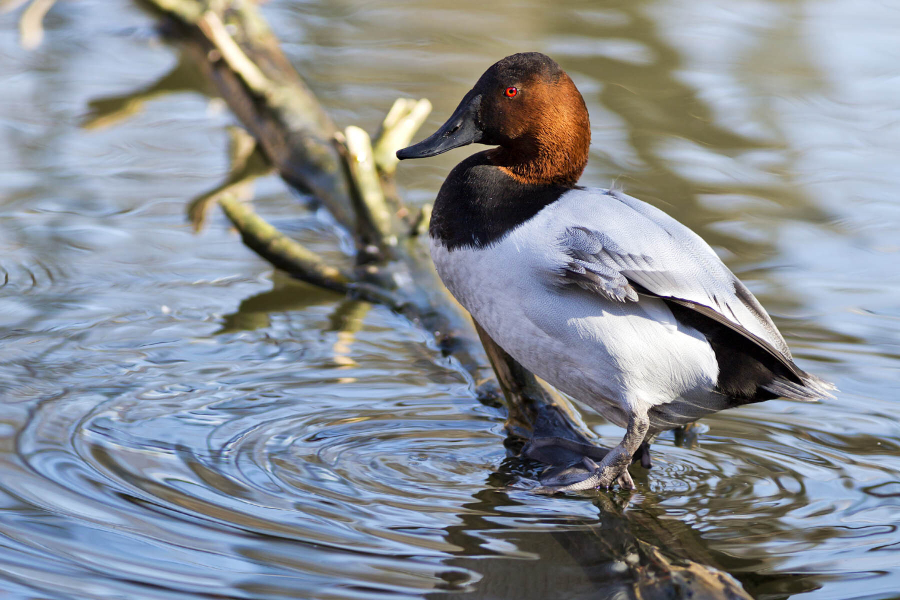
With its attractive mix of forested uplands, tidal marshes and intertidal mud flats, beaches and manmade rocky shores, the Chesapeake Bay offers a wide range of habitats to waterbirds. Even in the dead of winter, the productivity and position of the nation’s largest estuary—which offers fish, grasses and aquatic invertebrates to eat and is located in the center of the Atlantic Flyway—make it a perfect place for those birds that depend on aquatic resources to take up residence. Indeed, according to a report from the Center for Conservation Biology, the Bay supports 87 species of waterbirds during winter months.
Of these wintering waterbirds, 14 species rely on the Bay to serve as habitat for more than 10 percent of their continental populations. Learn about five of these species below.
1. The canvasback (Aythya valisineria) is the largest species of diving duck, with a long, sloping profile and wedge-shaped head. Because the birds keep their breeding plumage for most of the year, males are often seen with chestnut-colored heads, black breasts and white wings, sides and bellies. Canvasbacks feed on the roots, leaves and buds of underwater grasses—with wild celery a favorite winter food—as well as snails, clams and other aquatic invertebrates. In 2015, researchers with the Maryland Mid-winter Waterfowl Survey recorded 64,200 canvasbacks along the state’s Bay shoreline and Atlantic coast. This is one of the state’s highest canvasback counts since the mid-1960s, and close to the survey’s 2014 estimate of 68,400 birds.
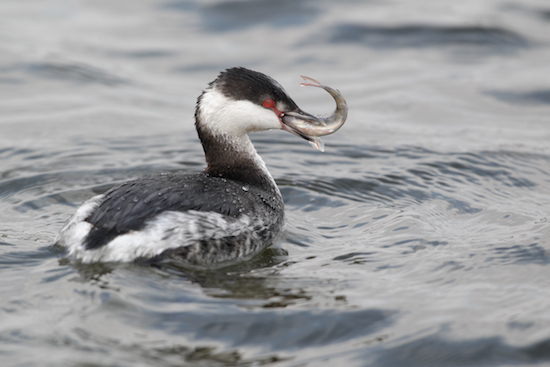
2. The horned grebe (Podiceps auritus) is a small, duck-like waterbird whose plumage is black and white during winter months. During the breeding season, it has black and chestnut plumage and two golden patches of feathers behind its scarlet eyes. It can raise and lower these “horns” at will, and these give the species its common name. Horned grebes can use their straight, stubby bills to pick insects out of the air or off of the water’s surface, but most often dive into the water to hunt for aquatic invertebrates.
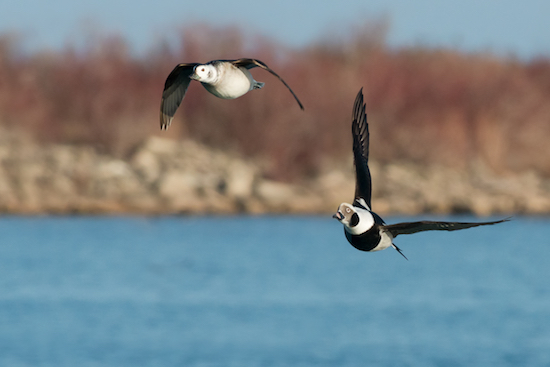
3. The long-tailed duck (Clangula hyemalis) is a medium-sized diving duck that has been reported to forage for food at depths of up to 200 feet. In the Chesapeake Bay, however, the birds usually dive to depths of 25 feet to reach the plant matter, small fish and aquatic invertebrates on which it feeds. Male long-tailed ducks have two long and slender tail feathers—which give the species its common name—and often have a pink band near the tip of their black bills. The birds often swim in small groups within a large, loose gathering of several hundred individuals. In 2015, researchers with the Maryland Mid-winter Waterfowl Survey recorded 100 long-tailed ducks along the state’s Bay shoreline and Atlantic coast. This is the state’s lowest long-tailed duck count of the last five years, and continues the decline that has been recorded since 2012, when 800 birds were observed.
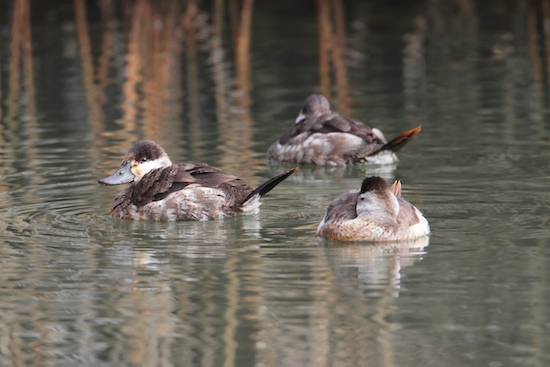
4. The ruddy duck (Oxyura jamaicensis) is one of the smallest ducks of the Chesapeake Bay. The chubby bird has a long, stiff tail—which it often holds upright—and a wide, gray bill—which on males turns blue in the summer. Ruddy ducks dive into the water to search for aquatic plants and invertebrates and to seek refuge from predators, diving instead of flying when frightened. In 2015, researchers with the Maryland Mid-winter Waterfowl Survey recorded 20,000 ruddy ducks along the state’s Bay shoreline and Atlantic coast. This is just below the state’s short-term average ruddy duck count.
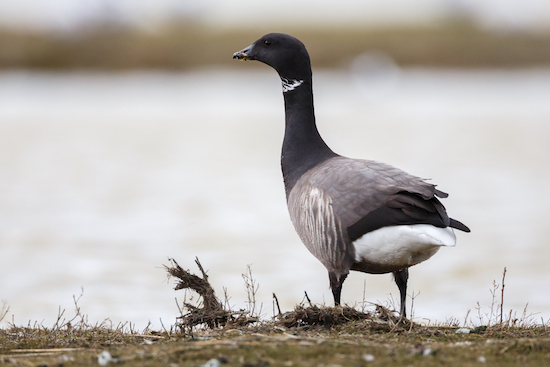
5. The Atlantic brant (Branta bernicla) is a small goose with a small, black head; short, black bill and neck; white necklace; and light gray belly. Brants graze on land, dip their heads underwater and upend their whole bodies to feed on aquatic plants and invertebrates. Eelgrass is a favorite food and staple of their diet. In 2015, researchers with the Maryland Mid-winter Waterfowl Survey recorded 900 brants along state’s Bay shoreline and Atlantic coast. This is just below the state’s short-term average brant count.

Comments
Thanks for confirming what we saw concerning the number of Canvasbacks! Last year, we saw huge rafts of these ducks at York River State Park. They were swimming in formations that would make a military drill team jealous. http://www.dcr.virginia.gov/state-parks/blog/a-day-in-the-life-of-york-river-state-park-canvasback-armada-5408
Thank you!
Your comment has been received. Before it can be published, the comment will be reviewed by our team to ensure it adheres with our rules of engagement.
Back to recent stories